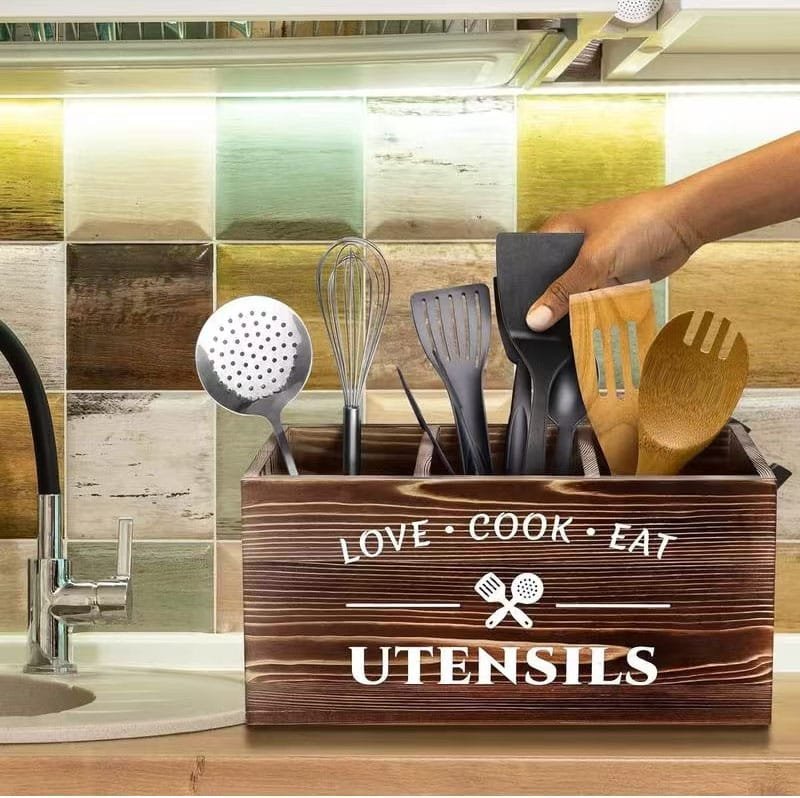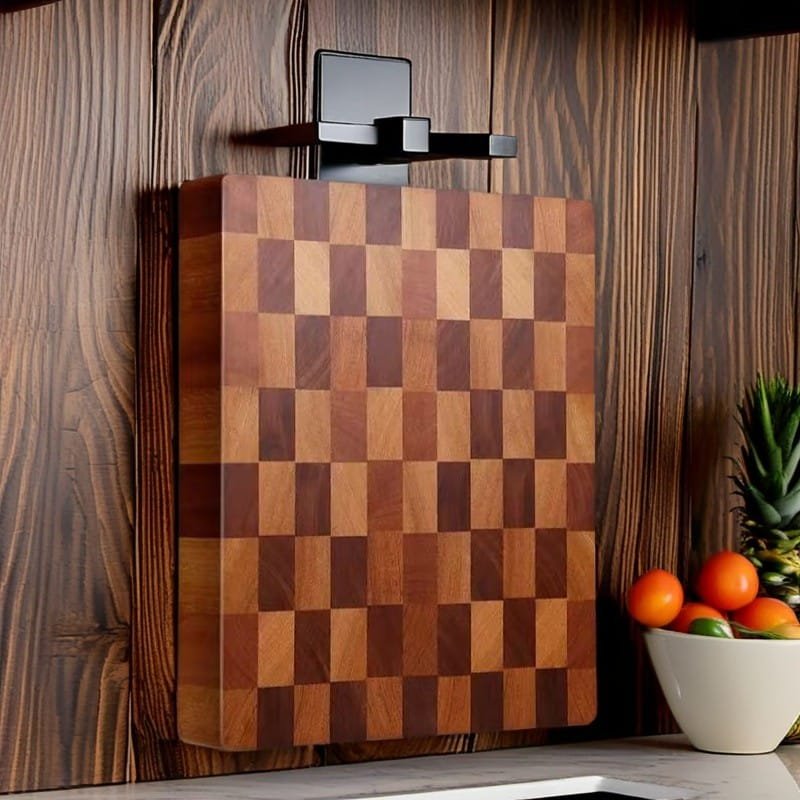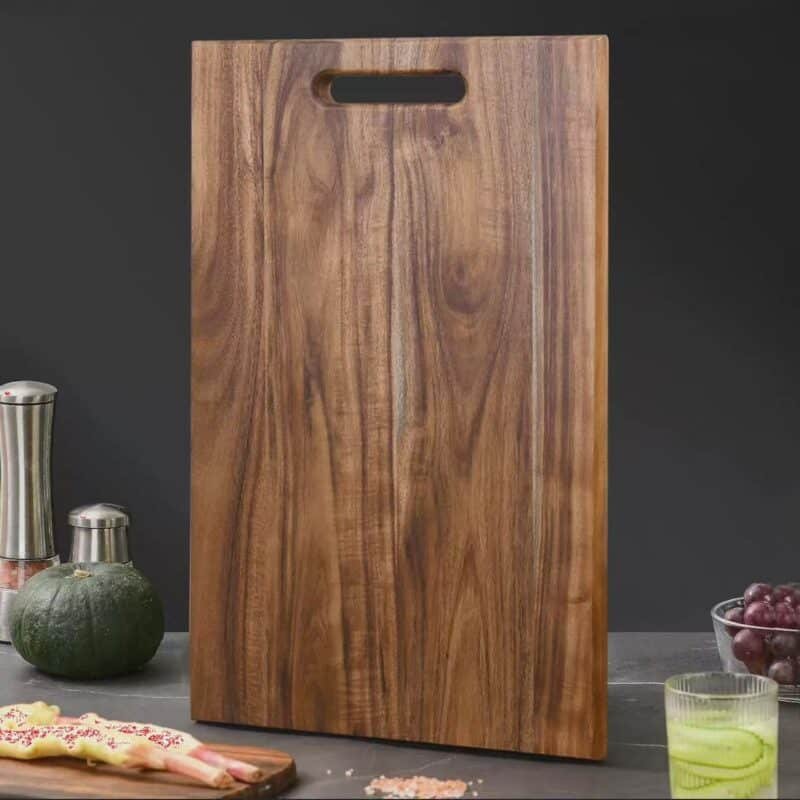Today, when industrial kitchen utensils are flooding the market, natural and simple wooden kitchen utensils are showing a strong return. From hand-carved spoons to thick cutting boards, the wood redefines modern kitchen aesthetics with its unique sense of temperature and vitality. However, this natural material exhibits complex characteristics in use – it not only cares about the tool but also requires the user to be gentle; it is both natural and antibacterial, but also may hide dirt. How to truly control the dual character of wood? This requires a comprehensive understanding from scientific cognition to daily practice.
- Core advantages: Why choose wooden kitchenware
Excellent durability and economy
High-quality hardwood kitchenware (such as maple, black gold sandalwood, cherry wood) has a dense and hard fiber structure, and its compressive strength is far superior to that of ordinary plastic products. Experiments show that under normal maintenance, the service life of wooden cutting boards can reach 5-10 years, which is more than three times that of plastic cutting boards. Its deformation resistance is particularly prominent in high temperature environments – it will not soften like plastic when it encounters heat, nor will it be hot like metal conduction. This durability significantly reduces the cost of long-term replacement.
Knife friendly
The microelastic surface of the wood forms a natural buffer layer, which is not easy to roll or collapse when the blade comes into contact. Research has confirmed that at the same frequency of use, the tool used on wooden cutting boards stays sharp for 25% longer than the hard surface, greatly reducing the sharpening frequency and tool loss.
Natural antibacterial barrier
Comparative experiments at the University of California, Davis revealed an abnormal phenomenon: the porous structure of wood has the advantage of antibacteriality – capillary action promotes rapid infiltration of moisture, causing unfavorable bacteria to stay and reproduce on the surface. The natural tannins and phenolic substances contained in maple and ebony can inhibit the growth of microorganisms. After proper cleaning, their hygiene performance exceeds that of most synthetic materials.
Win-win for environmental protection and safety
Wood is taken from renewable resources (especially FSC certified wood) and can be naturally degraded after being discarded. Its manufacturing process uses less chemical glues, and the finished product has almost no formaldehyde release, avoiding the risk of plasticizer dissolution during high-temperature cooking, and providing families with a safer food contact surface.
Irreversible aesthetics and touch
From the dark and shallow textures of black gold sandalwood to the warm and rosy glow of cherry wood, each piece of wood is a natural work of art. When used as a food background board, its warm tone can improve the visual freshness of the ingredients by about 15% (color psychology test data), and the ergonomic grip further optimizes the operating experience

- Use challenges: Reasonable cognitive limitations
High maintenance requirements
Wood has the “breathing” characteristics of hygroscopic expansion, dryness and shrinkage. Mis-management errors will lead to cracking, warping or mildew, especially when the moisture content exceeds 18%. Therefore, the dishwasher is prohibited from being used in the wood (wet and hot environment destroys fiber) and it is not necessary to soak for a long time.
Odor and pollution sensitivity
Wooden pores may absorb strong odor molecules such as garlic and curry, and may also penetrate pigments (such as beet juice). If used to treat raw meat, residual protein may be embedded in knife marks and cause cross contamination, and it is necessary to cooperate with instant deep cleaning.
Fragile balance between humidity and temperature
Two invisible killers in the kitchen:
Moisture: Water splashing in the sink and steam condensation can easily cause blackening and moldy edges to become
Heat source: high temperature baking beside the stove causes local dehydration and cracking
Cost considerations
Whole-wood chopping boards (such as century-old ebony) can be priced at 3-5 times that of splicing boards, but they are still rational investments for long-term users and health priority.

, Professional maintenance guide: Scientific methods to extend life
Cleaning specifications
Instant hand washing principle: Clean with warm water + neutral detergent within 10 minutes after use, and wipe the soft sponge along the lines. Avoid using steel wool balls (scratching the surface to form a plaque hotbed).
Deep stain removal solution: Baking soda paste (edible grade baking soda: water = 3:1) Apply oily dirt, let it stand for 15 minutes and then brush it clean. For a stubborn odor, you can grind the surface with lemon slices + coarse salt.
Drying tips
Moisture residue is the number one killer of wood, and requires three drying guarantees:
First drying: Microfiber cloth absorbs clear water
Secondary drying: place it in a ventilated place at a 45° angle with the airflow direction (such as using a drain rack)
Final confirmation: Only when the hand touches are tidbits can it be stored.
Periodic oil maintenance
Food-grade mineral oil + beeswax mixture is the best maintenance material:
Frequency: New appliances once a week in the first month, and once every February-March afterwards
Operation: Let stand for 20 minutes after applying thinly, wipe off the remaining oil
Taboo: Vegetable oils such as olive oil are prone to oxidation and rancidity, which will promote bacterial growth.
Damage repair method
Burr treatment: dip 600 mesh sandpaper and lightly grind it with oil and maintenance
Crack Remediation: Inject wood chips + food glue to compact, clamp for 48 hours
Deep mold spots: Sunlight exposure ≤30 minutes after wiping with white vinegar (over exposure to the sun has aggravated cracking)
- Chopping board special items: purchase and special maintenance
As core wooden kitchenware, the quality of the cutting board directly affects safety and experience:
Whole wood>Split
The splicing plate is bonded with urea-formaldehyde, which may release formaldehyde when exposed to moisture and heat. The whole wooden board (such as the double gun black gold sandalwood cutting board) is seamless without glue, eliminating dirt and dirt, and the structural stability is increased by 60% when chopping bones 69.
Wood selection criteria
Hardness: Janka value > 1,200 lbf (with impact force)
Density: >0.65g/cm³ (prevent juice penetration)
Safety Certification: FSC Forest Certification + Food Contact Grade Coating.
Opening and long-term maintenance
New cutting boards need to be activated:
Dewaxed: 60℃ hot water rinse the surface
Saturated salt leach: Soak in concentrated salt water for 48 hours (equilibrium internal humidity)
Oil seal: After oiling, wrap and seal and let stand for 24 hours

The ultimate value of wooden kitchenware is that it makes the kitchen no longer a purely functional space, but a place of dialogue between man and nature. When a sandalwood cutting board is warm and shiny after oil is raised, and when the maple spoon handle is ground into the palm, this vitality that evolves over time is in a state that plastics and metals cannot reach. Understand its characteristics and take care of them patiently, the wood will repay this respect with decades of service – convey the most primitive warmth of the earth in every cutting and stirring


